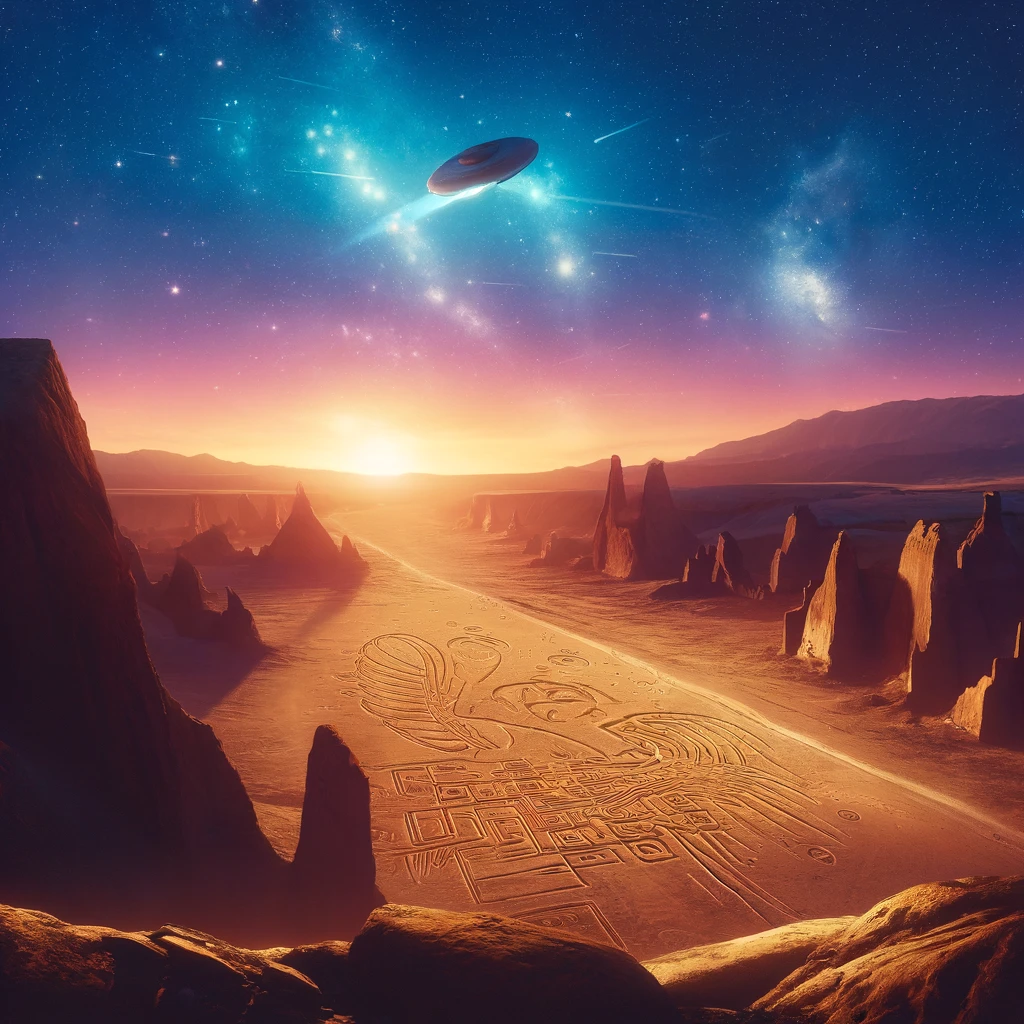When it comes to extraterrestrial theories, humanity loves to go big. We’ve turned crop circles into galactic graffiti and pyramids into alien charging stations. But what about the vast, sprawling land art of the Nazca Lines in Peru or the mysterious layout of Chaco Canyon in New Mexico? What if these weren’t just monumental artistic or architectural endeavors, but—stay with me here—alien parking lots?
Yes, folks, we’re talking about the idea that Earth’s ancient wonders might have doubled as rest stops for intergalactic travelers. After all, even aliens need to stretch their tentacles somewhere.
The Nazca Lines: A Galactic Landing Strip?
Let’s start with the Nazca Lines—massive geoglyphs etched into the Peruvian desert, depicting everything from animals to geometric shapes. Stretching over 500 square kilometers, they’re impossible to fully appreciate from the ground. It’s almost as if they were designed to be seen from the air.
Enter the alien parking lot theory. Could these sprawling designs have been runway markers for UFOs? Maybe the hummingbird was a “Reserved for Visitors from Andromeda” sign, while the spider indicated a no-fly zone. The giant hands? Clearly a distress signal: “Park here, Earth is friendly!”
Of course, mainstream archeologists argue that the lines were ceremonial in nature, meant to appease the gods. But isn’t it possible that the “gods” they were trying to contact were actually frequent flyers from the Pleiades?
Chaco Canyon: Earth’s First Spaceport Lounge?
Meanwhile, in the deserts of New Mexico, Chaco Canyon stands as a testament to ancient ingenuity. Its carefully aligned buildings and kivas (ceremonial chambers) suggest an advanced understanding of astronomy and engineering. But what if this wasn’t just a spiritual hub? What if it was a spaceport terminal for extraterrestrial visitors?
Picture it: The massive Great Houses of Chaco Canyon weren’t homes for humans—they were alien lounges. Those perfectly straight roads leading out of the canyon weren’t meant for feet—they were for intergalactic hovercraft.
And what about the mysterious petroglyphs found in the canyon? Some resemble strange beings and objects that don’t quite fit with the local wildlife. Were these ancient graffiti, scrawled by Earthlings starstruck by alien visitors? Or were they the alien equivalent of Yelp reviews? (“Nice planet, but too dusty. 3/5 stars.”)
Did Aliens Get Tired of Earthly Rest Stops?
So, if these ancient wonders really were parking lots and terminals for alien travelers, why did they stop visiting? Did Earth run out of parking spaces? Did they get tired of our primitive snacks (too much corn, not enough flavor)?
Or perhaps they upgraded to a new galactic highway system that bypasses our little blue planet altogether. Imagine an ancient alien saying, “We used to stop at Earth, but now we just take the wormhole through Alpha Centauri—it’s faster.”
Conclusion: A Universe of Possibilities
Whether the Nazca Lines and Chaco Canyon were alien rest stops, ceremonial centers, or the result of some incredibly bored humans with a knack for geometry, one thing’s clear: Our ancestors had big imaginations—and so do we.
So, next time you gaze at a UFO-shaped cloud or spot an odd carving in the desert, ask yourself: Is this a sign of ancient aliens? Or just proof that, much like us, our ancestors loved a good cosmic mystery?
And remember—if you’re ever in a desert and see a giant hummingbird etched in the ground, don’t panic. Just wave. You never know who might be watching.
